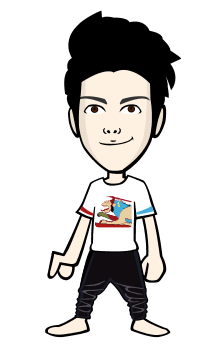
Known as the "King of Terriers," the Airedale is indeed the largest of all terriers. The dog breed originated in the Aire Valley of Yorkshire, and was created to catch otters and rats in the region between the Aire and Wharfe Rivers. An able sporting dog, he became an ideal working dog as well, proving his worth during World War I. Intelligent, outgoing, and confident, the Airedale possesses a wonderful playful streak that delights his owners.
Size
Males stand 23 inches tall, and weigh about 50 to 65 pounds. Females are slightly shorter, and weigh 40 to 55 pounds.
Personality
The Airedale is a hard-working, independent, and athletic dog with a lot of drive, energy, and stamina. He is prone to digging, chasing, and barking — behaviors that come naturally to terrier breeds. These traits can be frustrating to owners unfamiliar with the Airedale personality.
If you are thinking about an Airedale, consider whether you are willing to live with his propensity toward potentially undesirable behaviors — and whether you want to take on the challenges that go along with his independent nature. If you decide you are, you will be delighted with the Airedale's active, fun-loving, even comical attitude.
The Airedale is a lively breed, and he needs plenty of activity. Don't leave him alone for long periods of time, or he is likely to become bored, which leads to the aforementioned destructive behaviors. Keep training interesting and fresh — repetitive exercises will become a bore to the Airedale. He is best motivated by treats and other positive reinforcement methods; drill-and-jerk training methods should be avoided.
A reliable watchdog, the Airedale takes pride in protecting his family. He can be a fierce guardian, but is friendly with his family and friends.
Ultimately, temperament is affected by a number of factors, including heredity, training, and socialization. Puppies with nice temperaments are curious and playful, willing to approach people and be held by them. Choose the middle-of-the-road puppy, not the one who's beating up his littermates or the one who's hiding in the corner.
Always meet at least one of the parents — usually the mother is the one who's available — to ensure that they have nice temperaments that you're comfortable with. Meeting siblings or other relatives of the parents is also helpful for evaluating what a puppy will be like when he grows up.
Like every dog, the Airedale needs early socialization — exposure to many different people, sights, sounds, and experiences — when they're young. Socialization helps ensure that your Airedale puppy grows up to be a well-rounded dog.
Enrolling him in a puppy kindergarten class is a great start. Inviting visitors over regularly, and taking him to busy parks, stores that allow dogs, and on leisurely strolls to meet neighbors will also help him polish his social skills.
Health
Airedales are generally healthy, but like all breeds, they're prone to certain health conditions. Not all Airedales will get any or all of these diseases, but it's important to be aware of them if you're considering this breed.
If you're buying a puppy, find a good breeder who will show you health clearances for both your puppy's parents. Health clearances prove that a dog has been tested for and cleared of a particular condition.
Feeding
Recommended daily amount: 1.5 to 2.5 cups of high-quality dry food a day, divided into two meals.
NOTE: How much your adult dog eats depends on his size, age, build, metabolism, and activity level. Dogs are individuals, just like people, and they don't all need the same amount of food. It almost goes without saying that a highly active dog will need more than a couch potato dog. The quality of dog food you buy also makes a difference — the better the dog food, the further it will go toward nourishing your dog and the less of it you'll need to shake into your dog's bowl.
Keep your Airedale in good shape by measuring his food and feeding him twice a day rather than leaving food out all the time. If you're unsure whether he's overweight, give him the eye test and the hands-on test.
First, look down at him. You should be able to see a waist. Then place your hands on his back, thumbs along the spine, with the fingers spread downward. You should be able to feel but not see his ribs without having to press hard. If you can't, he needs less food and more exercise.
For more on feeding your Airedale, see our guidelines for buying the right food, feeding your puppy, and feeding your adult dog.



